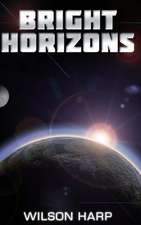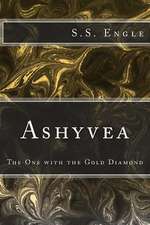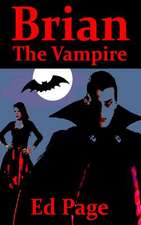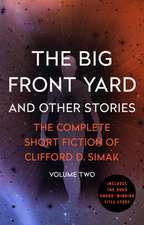Clifford Simak Collection of Sci Fi; Hellhounds of the Cosmos, Project Mastodon, the World That Couldn't Be, the Street That Wasn't There
Autor Clifford D. Simaken Limba Engleză Paperback – 28 feb 2011
Preț: 96.06 lei
Nou
Puncte Express: 144
Preț estimativ în valută:
18.38€ • 19.28$ • 15.30£
18.38€ • 19.28$ • 15.30£
Carte tipărită la comandă
Livrare economică 01-15 aprilie
Preluare comenzi: 021 569.72.76
Specificații
ISBN-13: 9781612039107
ISBN-10: 1612039103
Pagini: 168
Dimensiuni: 152 x 229 x 9 mm
Greutate: 0.23 kg
Editura: Gnome Press
ISBN-10: 1612039103
Pagini: 168
Dimensiuni: 152 x 229 x 9 mm
Greutate: 0.23 kg
Editura: Gnome Press
Notă biografică
Clifford Donald Simak (1904 - 1988) was an American science fiction writer. He was honored by fans with three Hugo Awards and by colleagues with one Nebula Award. The Science Fiction Writers of America made him its third SFWA Grand Master and the Horror Writers Association made him one of three inaugural winners of the Bram Stoker Award for Lifetime Achievement. Simak became interested in science fiction after reading the works of H. G. Wells as a child. His first contribution to the literature was "The World of the Red Sun", published by Hugo Gernsback in the December 1931 issue of Wonder Stories. Within a year he placed three more stories in Gernsback's pulp magazines and one in Astounding Stories, then edited by Harry Bates. But his only science fiction publication between 1932 and 1938 was "The Creator" (Marvel Tales #4, March-April 1935), a story with religious implications, which was then rare in the genre. Once John W. Campbell, at the helm of Astounding from October 1937, began redefining the field, Simak returned and was a regular contributor to Astounding Science Fiction (as it was renamed in 1938) throughout the Golden Age of Science Fiction (1938-1950). At first, as in the 1939 serial novel Cosmic Engineers, he wrote in the tradition of the earlier "super science" subgenre that E. E. "Doc" Smith perfected, but he soon developed his own style, which is usually described as gentle and pastoral. During this period, Simak also published a number of war and western stories in pulp magazines. His best-known book may be City, a fix-up novel based on short stories with a common theme of mankind's eventual exodus from Earth. Simak continued to produce award-nominated novels throughout the 1950s and 1960s. Aided by a friend, he continued writing and publishing science fiction and later, fantasy into his 80s. He believed that science fiction was not rooted in scientific fact, but was responsible for the failure of the genre to be taken seriously and stated his aim was to make the genre a part of what he called "realistic fiction."























